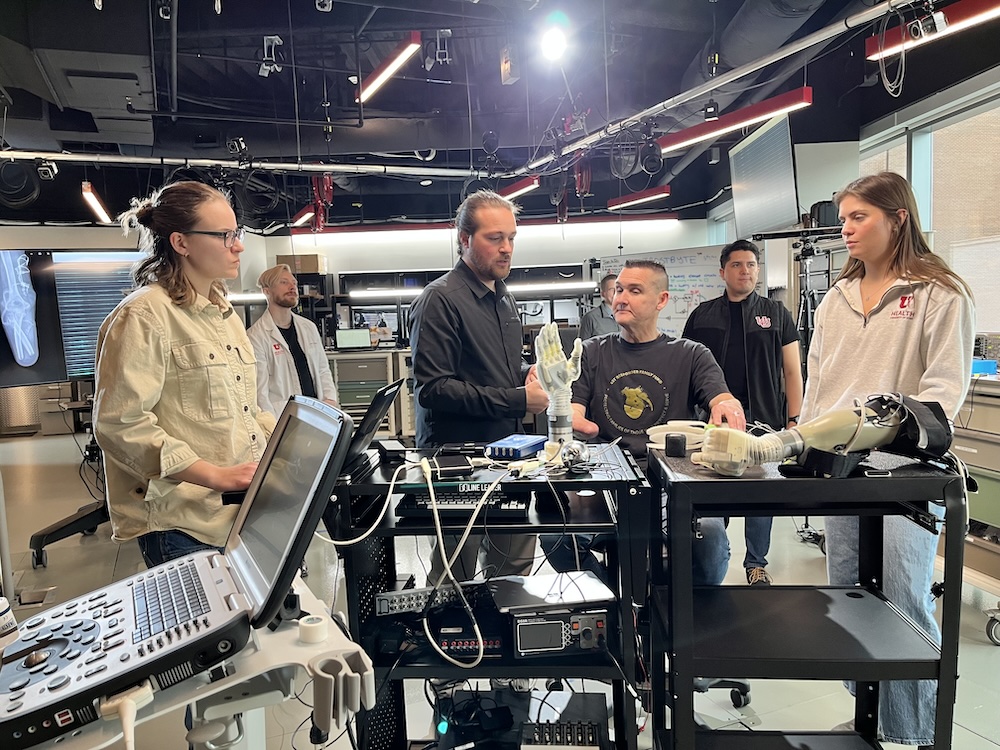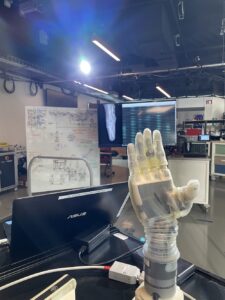University of Utah’s LUKE Arm, a groundbreaking robotic prosthetic that restores touch and movement for amputees, was showcased during FOX’s pregame broadcast.

Shortly before kickoff at Sunday’s Big Game, fans got a peak at a project that University of Utah researchers have been working on for the better part of two decades: the LUKE Arm.
In the run-up to the national anthem, FOX Sports presented a video “Essay on America,” narrated by actor Brad Pitt, that highlighted how the nation “huddles up,” coming together to accomplish great things. One of those huddles featured researchers at the U fitting a patient with the advanced prosthetic arm.

Named after the prosthesis Luke Skywalker acquires at the end of The Empire Strikes Back, the LUKE Arm may look like movie magic but the benefits it promises are very real. Thanks to a direct nerve interface, the LUKE Arm can translate the user’s thoughts into motion. Even better, this system can send signals back to the brain, giving the user a new sense of life-like touch.
And while this long-running research project still has hurdles ahead of it, it has also recently taken important steps toward becoming a viable commercial product.
A new contract with startup Biologic Input Output Systems (BIOS) will support the University of Utah’s ongoing Investigational Device Exception Early Feasibility Study, allowing for the recruitment of the clinical trial’s next participant.
The overwhelmingly positive results from eight previous participants earned the BIOS direct nerve interface a “Breakthrough Device Designation” from the FDA in March 2024, as well as admission into its Total Product Lifecycle Advisory Program. The FDA uses these programs to fast-track promising experimental medical devices toward everyday use.
Previous trials mostly saw participants use the LUKE Arm in controlled laboratory settings, independently testing different capabilities of the arm and painstakingly integrating them. Now, the researchers are ready to test how well the arm holds up in more realistic scenarios.
“This patient will be the first to take the LUKE Arm home and use it independently for their daily activities,” says Utah NeuroRobotics Lab Director Jacob George.
George, an assistant professor in the John and Marcia Price College of Engineering’s Department of Electrical & Computer Engineering and the Spencer Fox Eccles School of Medicine’s Department of Physical Medicine and Rehabilitation, also serves as Chief Scientist for BIOS. In 2022, BIOS executed a licensing agreement with the University of Utah for the technology behind the neuroprosthesis, and continues to evolve the technology towards commercialization.
This next phase of the project marks an exciting step towards the commercialization and real-world implementation of an advanced neuroprosthesis. This project stems from the pioneering work of emeritus faculty member Richard Normann, who invented the Utah Array used in the arm’s direct nerve interface, as well as faculty member Florian Solzbacher, who commercialized the technology through Blackrock Neurotech. Blackrock Neurotech is another University of Utah-associated startup company that recently received a $200 million investment to expand their brain-computer interface technology.
For more information about participating in the NeuroRobotics’ next clinical trial, click here.